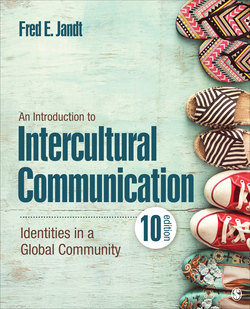Читать книгу An Introduction to Intercultural Communication - Fred E. Jandt - Страница 115
На сайте Литреса книга снята с продажи.
Case Study: Dogs as Pets or as Food
ОглавлениеThe meanings you attach to your perceptions are greatly determined by your cultural background. Think of how speakers of English categorize life. Most probably use the categories of human life and animal life. Now think of how you typically categorize animal life—probably into wild animals and domesticated animals. Now think of how you typically categorize domesticated animal life—probably into animals used for food, animals used for sport and recreation, and pets. Look at the picture of the puppy and capture your feelings.
Many consider dogs as pets. (The author’s first dog, Smokey.)
Fred E. Jandt
Most of us see this puppy in the category of pet, for which we have learned to relate warm, loving feelings. Puppies are cute, cuddly, warm, loving creatures. Now look at the next picture of dogs being rescued from a farm where they were raised to be eaten. Capture your feelings. Most of us who love dogs find this picture uncomfortable and disgusting. How can people eat dogs? They are pets, not food! It all depends on where you categorize them. Dogs are pets in some cultures and food in others. In the Arab world, dogs are acceptable as watchdogs and as hunting dogs but are not kept in the home as pets because they are seen as unclean and a low form of life. To call someone a dog is an insult among Arabs. People in most cultures have strong ideas about which foods are acceptable for human consumption and which are not. People in some countries think the custom in the United States of eating corn on the cob is disgusting because that food is fit only for pigs. Some Ukrainians like to eat salo, raw pig fat with black bread and vodka, which might cause nausea in some, as would knowing that horsemeat from California is served in restaurants in Belgium, France, and Japan.
Dogs being rescued from a South Korean dogmeat farm. Can you explain your feelings about this photograph? Your reaction of disgust to the picture is a culturally learned interpretation, and that interpretation can be quite strong.
Barcroft Media/Barcroft Media/Getty Images
Dogs were eaten to celebrate Liu Bang becoming emperor (202 BCE–195 BCE) in his hometown in Pei County in the eastern coastal province of Jiangsu. The practice was recognized as a provincial cultural heritage. Dogmeat is also popular in Guangxi Zhuang Autonomous Region, in the south; Yanbian Korean Autonomous Prefecture, in northeastern China; and neighboring North Korea. Urban Chinese today are more likely to have dogs as pampered companions. In 2009, China’s first anti–animal cruelty legislation was proposed that would make eating dogs and cats illegal (Ying, 2010).
In 1989, California made it a misdemeanor for any person to sell, buy, or accept any animal traditionally kept as a pet with the intent of killing the animal for food. More recently, animal rights groups have protested the sale of live animals, such as turtles, frogs, lobsters, crabs, fish, and chicken, for food at Asian-American markets. Asian tradition is that fresh meat is tastier and more healthful, that the best meat “enters your house still breathing.” Animal rights activists contend that the animals are treated inhumanely in the shops and are killed in ways that cause them unnecessary pain. Asian-American groups argue that eating dogs and cats is an extreme rarity among Southeast Asian immigrants and call the law and the animal rights activists racist.
In some cultures, parts of some animals are categorized as medicine. In other cultures, certain animals are considered sacred and definitely would not be eaten. The Hindu elephant-headed God1 Ganesh is accompanied by a rat whenever he travels. Rats, like cows, are deified by Hindus in India. No Hindu worship is complete without an offering to Ganesh and his companion, the rat.
